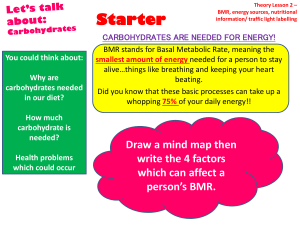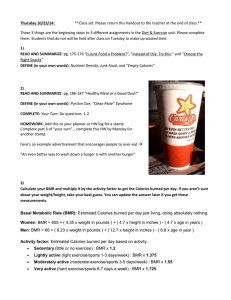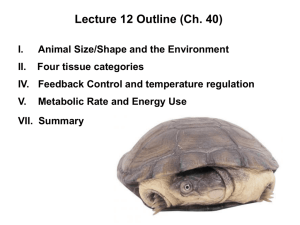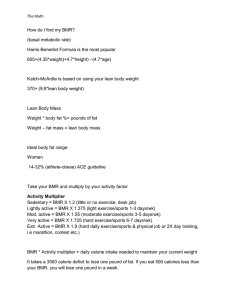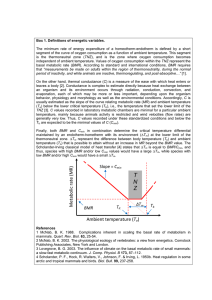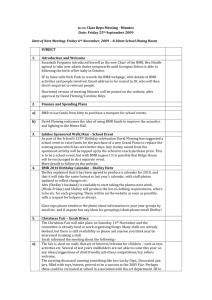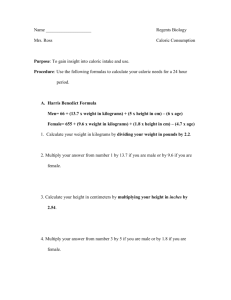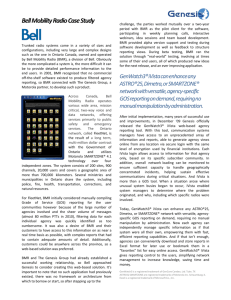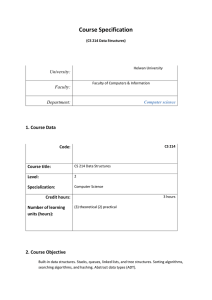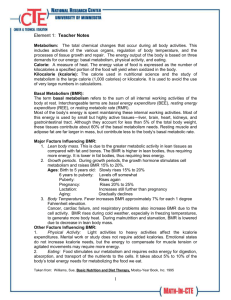Unit 2 - Human work and Power
advertisement
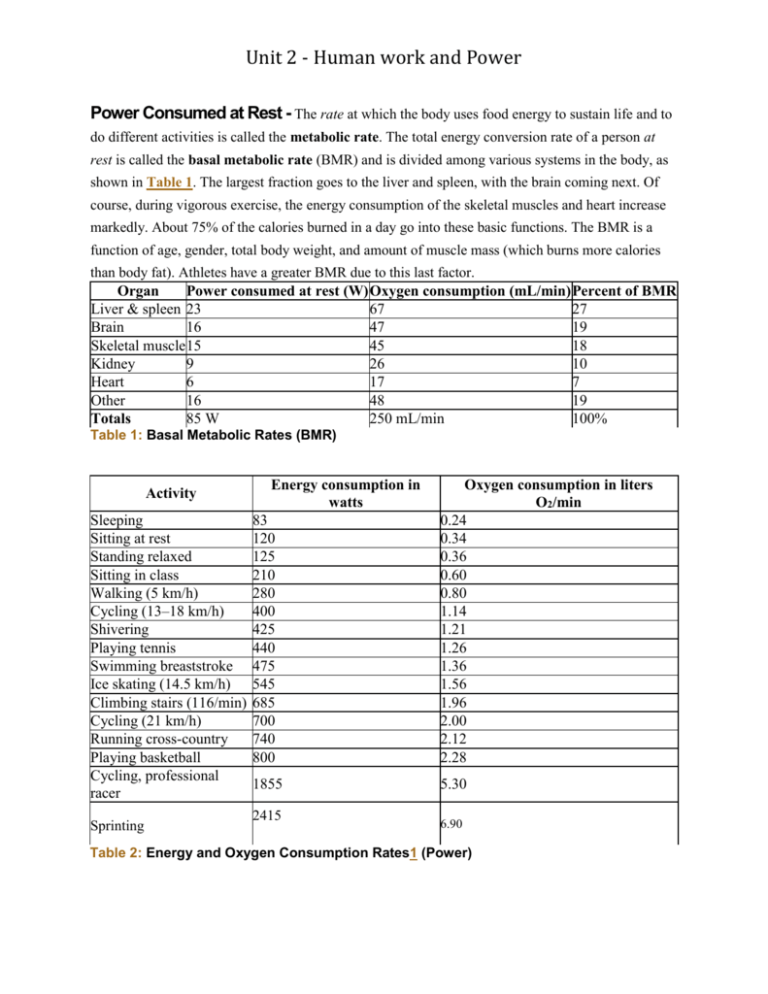
Unit 2 - Human work and Power Power Consumed at Rest - The rate at which the body uses food energy to sustain life and to do different activities is called the metabolic rate. The total energy conversion rate of a person at rest is called the basal metabolic rate (BMR) and is divided among various systems in the body, as shown in Table 1. The largest fraction goes to the liver and spleen, with the brain coming next. Of course, during vigorous exercise, the energy consumption of the skeletal muscles and heart increase markedly. About 75% of the calories burned in a day go into these basic functions. The BMR is a function of age, gender, total body weight, and amount of muscle mass (which burns more calories than body fat). Athletes have a greater BMR due to this last factor. Organ Power consumed at rest (W) Oxygen consumption (mL/min) Percent of BMR Liver & spleen 23 67 27 Brain 16 47 19 Skeletal muscle 15 45 18 Kidney 9 26 10 Heart 6 17 7 Other 16 48 19 85 W 250 mL/min 100% Totals Table 1: Basal Metabolic Rates (BMR) Activity Sleeping Sitting at rest Standing relaxed Sitting in class Walking (5 km/h) Cycling (13–18 km/h) Shivering Playing tennis Swimming breaststroke Ice skating (14.5 km/h) Climbing stairs (116/min) Cycling (21 km/h) Running cross-country Playing basketball Cycling, professional racer Sprinting Energy consumption in watts 83 120 125 210 280 400 425 440 475 545 685 700 740 800 Oxygen consumption in liters O2/min 0.24 0.34 0.36 0.60 0.80 1.14 1.21 1.26 1.36 1.56 1.96 2.00 2.12 2.28 1855 5.30 2415 6.90 Table 2: Energy and Oxygen Consumption Rates1 (Power) Unit 2 - Human work and Power All bodily functions, from thinking to lifting weights, require energy. (See Figure 7.28.) The many small muscle actions accompanying all quiet activity,from sleeping to head scratching, ultimately become thermal energy, as do less visible muscle actions by the heart, lungs, and digestive tract. Shivering, in fact, is an involuntary response to low body temperature that pits muscles against one another to produce thermal energy in the body(and do no work). The kidneys and liver consume a surprising amount of energy, but the biggest surprise of all it that a full 25% of all energy consumed by the body is used to maintain electrical potentials in all living cells. (Nerve cells use this electrical potential in nerve impulses.) This bioelectrical energy ultimately becomes mostly thermal energy, but some is utilized to power chemical processes such as in the kidneys and liver, and in fat production. Figure 7.28 This fMRI scan shows an increased level of energy consumption in the vision center of the brain. Here, the patient was being asked to recognize faces. (credit:NIH via Wikimedia Commons)

